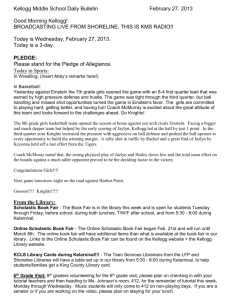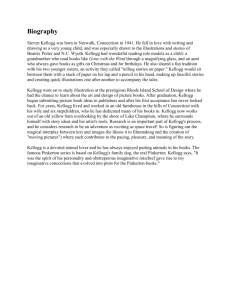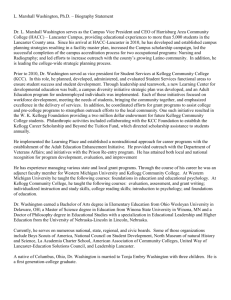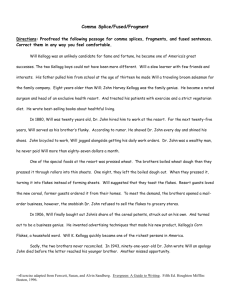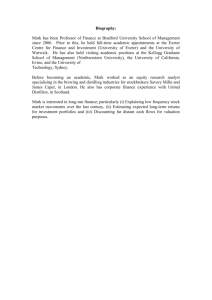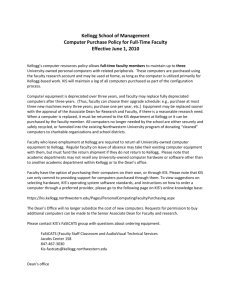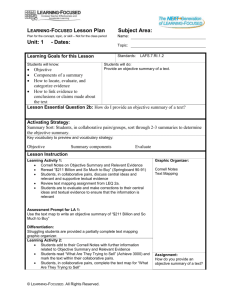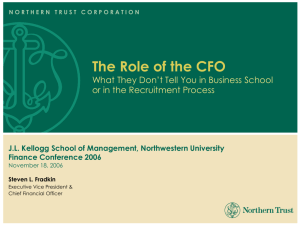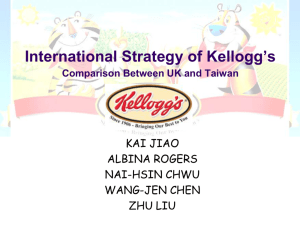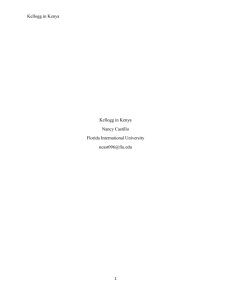The Future of Marketing
advertisement
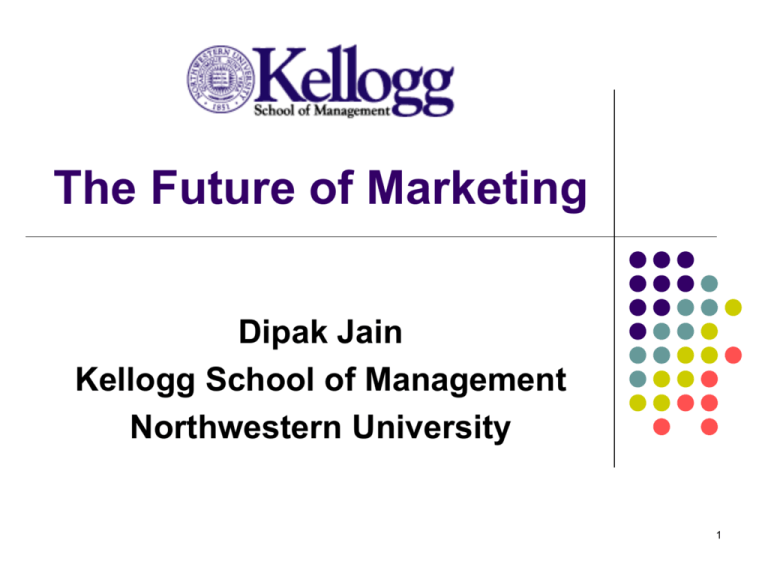
The Future of Marketing Dipak Jain Kellogg School of Management Northwestern University 1 1. What Challenges? “Nano-second” Culture 2 1. What Challenges? “Nano-second” Culture “Hyper” Competition 3 1. What Challenges? “Nano-second” Culture “Hyper” Competition Demanding Customers 4 2. Meeting the Challenges: A Customer-Centric Approach Doing business the way the customer wants to do it 5 2. Meeting the Challenges: A Customer-Centric Approach Doing business the way the customer wants to do it Being close to customers and ahead of competition 6 2. Meeting the Challenges: A Customer-Centric Approach Doing business the way the customer wants to do it Being close to customers and ahead of competition Developing capabilities in attracting and retaining valuable customers 7 3. Customer Centricity: Major Shifts in Thinking Realize Marketing is: Product/ Service Total Customer Experience 8 3. Customer Centricity: Major Shifts in Thinking Realize Marketing is: Product/ Service Total Customer Experience Focus On: Product Life Cycle Customer Life Cycle 9 3. Customer Centricity: Major Shifts in Thinking Realize Marketing is: Product/ Service Total Customer Experience Focus On: Product Life Cycle Customer Life Cycle Anticipate Customer’s: Articulated Needs Unarticulated Needs 10 3A. Customer Life-Cycle Customer Well-Being (Health care and Wealth care) 11 3A. Customer Life-Cycle Customer Well-Being (Health care and Wealth care) Media and Entertainment (Customer Engagement) 12 3A. Customer Life-Cycle Customer Well-Being (Health care and Wealth care) Media and Entertainment (Customer Engagement) Hospitality Services (Tourism-Travel & Hotels, Restaurants) 13 3B. Unarticulated Customer Needs CUSTOMER NEEDS EXISTING (Current, Articulated) LATENT (Future, Unarticulated) Objective: Serve Current Markets Critical Issues: Customer Expectations Create New markets Customer Education/Trials 14 3C. Total Customer Experience: Value Disciplines PSYCHOLOGICAL FUNCTIONAL ECONOMIC 15 3C. Sustaining Customer Value Maximize Customer Value = customer cost of switching customer cost of thinking Reduce customer cost of thinking Increase customer cost of switching 16 4. Branding For Customers there should be a “clear” message 1. 2. 3. 4. 5. FedEx Nike Gap Singapore Airlines Star Alliance NUS Singapore “Reliability” “The athlete in you” “Affordable fashion” “Warm genuine attention & friendliness” “Global Access” “ “ “ “ 17 Branding: The Kellogg School Why the Kellogg School? L earning 18 Branding: The Kellogg School Why the Kellogg School? L earning O pportunities 19 Branding: The Kellogg School Why the Kellogg School? L earning O pportunities V alues 20 Branding: The Kellogg School Why the Kellogg School? L earning O pportunities V alues E thics 21 Branding: The Kellogg School Why the Kellogg School? L earning O pportunities V alues E thics Feel the LOVE@Kellogg 22 5. Summary Customer Centricity requires: Anticipating customers unarticulated needs Enhancing customers’ total experience Simplifying customer purchasing process Building customer loyalty Realizing customers (internal & external) as true assets 23
